


Theme
Student as teacher
INSTITUTION
University of Edinburgh
Feedback is a hot topic in medical education. Students seek high quality feedback and tutors want to be able to provide it. Peer assisted learning (see 'more detail' button below), is a useful way to deliver both teaching and learning opportunities to students, and whilst the model is used internationally, there has been little research on the importance of training peers to give feedback and its effect on tutees.
|
|
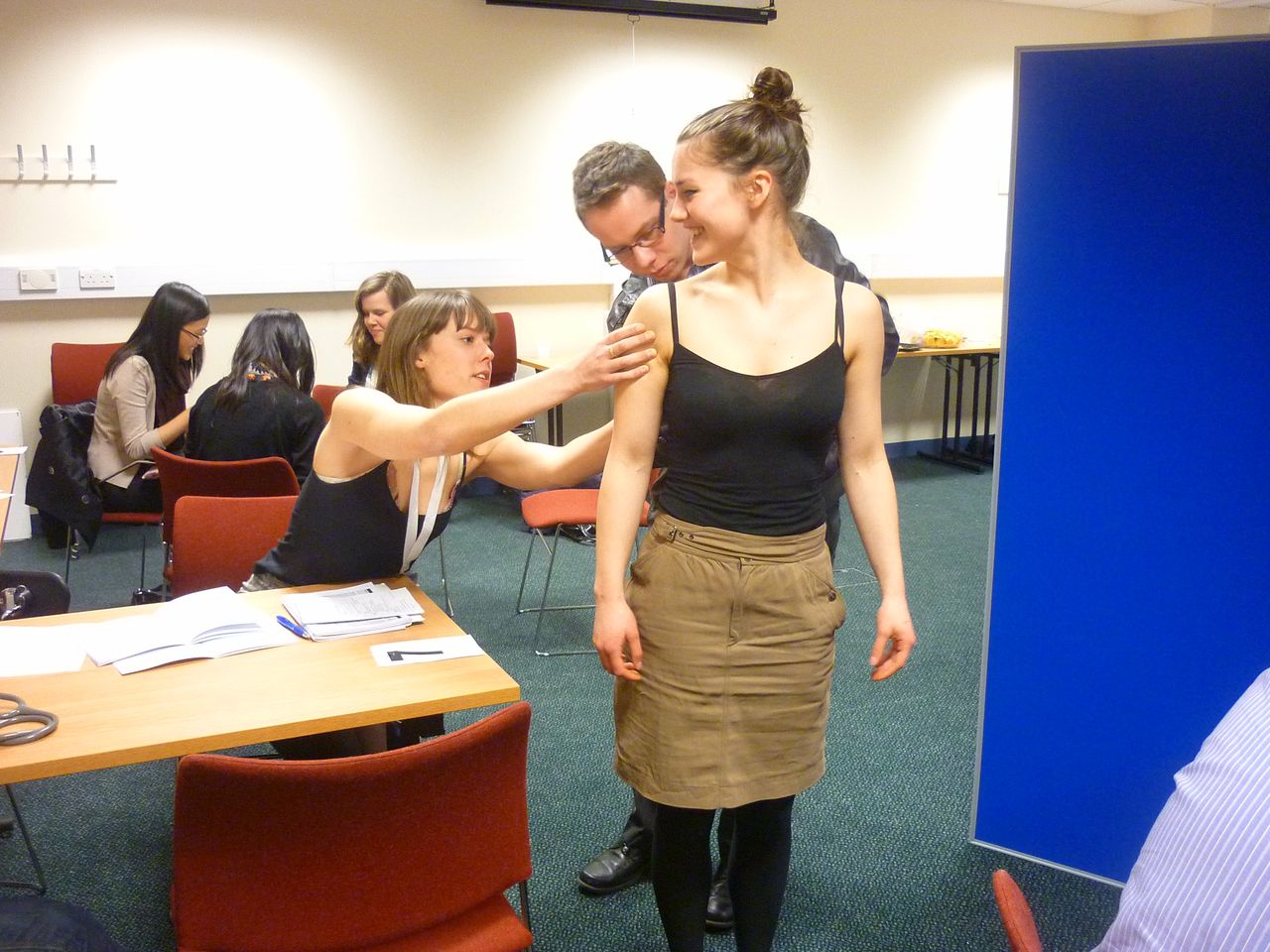 |
The images above show fourth year tutors and third year tutees completing a cardio station (left) and a shoulder examination station (right) during the OSCE PAL event. (Used with the permission of participants).
Aim
To assess whether training Year 4 students on how to deliver good feedback would make a difference to the mock exam performance or perceptions of Year 3 students who received this feedback during a peer-assisted learning event.
Method
Year 4 students at the University of Edinburgh ran a mock OSCE for year 3 students to help them prepare for their professional exam.
119 year 4 students volunteered to be tutors, and 234 year 3's (91% of the year) signed up to attend the event over the course of 3 nights.
Each year 3 student sat 8 stations of 5 minutes and received 1 minute of feedback from a year 4 tutee after each station.
|
|
|
The images above show fourth year tutors and third year tutees completing a resus station (left) and a locomotor station (right) during the OSCE PAL event. (Used with the permission of participants).
Tutor training (see video at top)
Prior to the event, half of the tutors were randomly allocated to attend training on how to give good feedback. This focused on generic feedback skills. Those allocated who could not attend the session were sent a secure link to a video of the same session. This was group A.
The other half, group B,received a generic advice sheet on feedback.
Tutee allocation
During the PAL, tutees were allocated to group A or B alternatively as they arrived. This meant half of the tutees were consistently advised by trained year 4 tutors (group A), and the other half consistently had year 4 tutors who had not been trained (group B).
The tutees were blind to the training status of their tutors.
Outcome measures
After 8 stations, the tutees sat a validated mock exam station on lower back pain. All tutors acted as examiners on this station and marked tutee performance according to a consultant-approved mark scheme.
At the end of the evening, tutees were asked about the feedback they had received from the tutors and their perceptions of its quality to investigate if there were any differences between those who had trained (group A) versus untrained tutors (group B).
Key findings:
-
No statistically significant difference in the marked exam station performance between group A and B tutees, with those in group B performing marginally better. (Table 1)
-
Trend towards more group A tutees finding the feedback useful and having increased confidence in passing their upcoming exams than those in group B. (Table 2)
-
Tutees were unable to consistently identify trained Vs non-trained tutors. (Table 3)
Table 1: Analysis of the marked locomotor 'red flag' station
|
|
Group A |
Group B |
|
Mean mark |
26.42 | 26.73 |
|
Variance |
17.20 | 23.10 |
|
Observations |
83 | 74 |
|
df |
155 |
|
|
t stat |
-0.43 |
|
|
P(T<=t) two-tail |
0.67 |
Table 2: Tutee feedback responses (figures are percentages)
Key: SD=strongly disagree, D=disagree, N=neutral, A=agree, SA=strongly agree
|
Statement |
Group A |
Group B |
||||||||
|
SD |
D |
N |
A |
SA |
SD |
D |
N |
A |
SA |
|
|
I enjoyed the evening |
0.0 |
0.0 |
1.1 |
23.7 |
75.3 |
2.2 |
0.0 |
0.0 |
31.5 |
66.3 |
|
In general, I found the station topics fair |
0.0 |
0.0 |
0.0 |
20.7 |
79.3 |
2.2 |
0.0 |
0.0 |
23.9 |
73.9 |
|
I found the evening useful in my exam preparation |
0.0 |
0.0 |
1.1 |
7.6 |
91.3 |
2.2 |
0.0 |
0.0 |
15.2 |
82.6 |
|
I feel more confident about my upcoming exams |
0.0 |
1.1 |
3.3 |
22.8 |
72.8 |
2.2 |
0.0 |
3.3 |
31.5 |
63.0 |
|
The feedback I received from tutors helped me improve my performance from station to station |
0.0 |
0.0 |
4.3 |
37.6 |
58.1 |
2.2 |
0.0 |
0.0 |
40.2 |
57.6 |
|
The feedback from the tutors will help me improve my performance in the exam |
0.0 |
0.0 |
2.2 |
32.6 |
65.2 |
4.4 |
0.0 |
1.1 |
35.2 |
59.3 |
|
The feedback from tutors has not been of benefit |
61.1 |
26.7 |
3.3 |
1.1 |
7.8 |
59.3 |
25.3 |
1.1 |
2.2 |
12.1 |
|
The amount of time for feedback at the end of each station was not enough to make any difference to my performance |
16.3 |
44.6 |
13.0 |
18.5 |
7.6 |
18.5 |
30.4 |
26.1 |
16.3 |
8.7 |
|
The feedback I received in OSCE 1 and 2 helped my performance in the final exam style station (Loco. Red Flag station) |
3.7 |
2.4 |
18.3 |
42.7 |
32.9 |
3.6 |
10.7 |
16.7 |
41.7 |
27.4 |
|
I think peer group teaching is effective |
1.1 |
1.1 |
2.2 |
24.7 |
70.8 |
2.2 |
0.0 |
0.0 |
24.7 |
73.0 |
Table 3: Number of tutee responses to the question 'Do you think your tutor received additional training in giving good feedback?'
|
|
Tutees assigned to Group A tutors |
Tutees assigned to Group B tutors |
|
Trained |
51 |
57 |
|
Untrained |
22 |
12 |
|
Unsure |
19 |
23 |
|
Total returned forms |
92 |
92 |
For further detail of the results and discussion, click the 'more detail' tab below.
- Student tutees enjoyed PAL and generally felt encouraged by the feedback they received whether their tutors were or were not trained in giving feedback.
- Tutees who had trained tutors seemed to leave with more confidence and were more satisfied that they had received meaningful feedback even in the short 1 minute timeframe.
- It was not possible to demonstrate a significant difference in performance during a mock exam station following the feedback training intervention.
- Tutees were unable to consistently identify whether they had received training from trained or untrained tutors.
-
Tutees generally value feedback given by peers.
-
Very limited tutor training in feedback can improve the perception of peer assisted learning experiences. It would be interesting to see whether increased tutor training or more time for feedback increased the benefits.
-
We do not have evidence that tutor training improves performance in actual exams or performance across different learning domains.
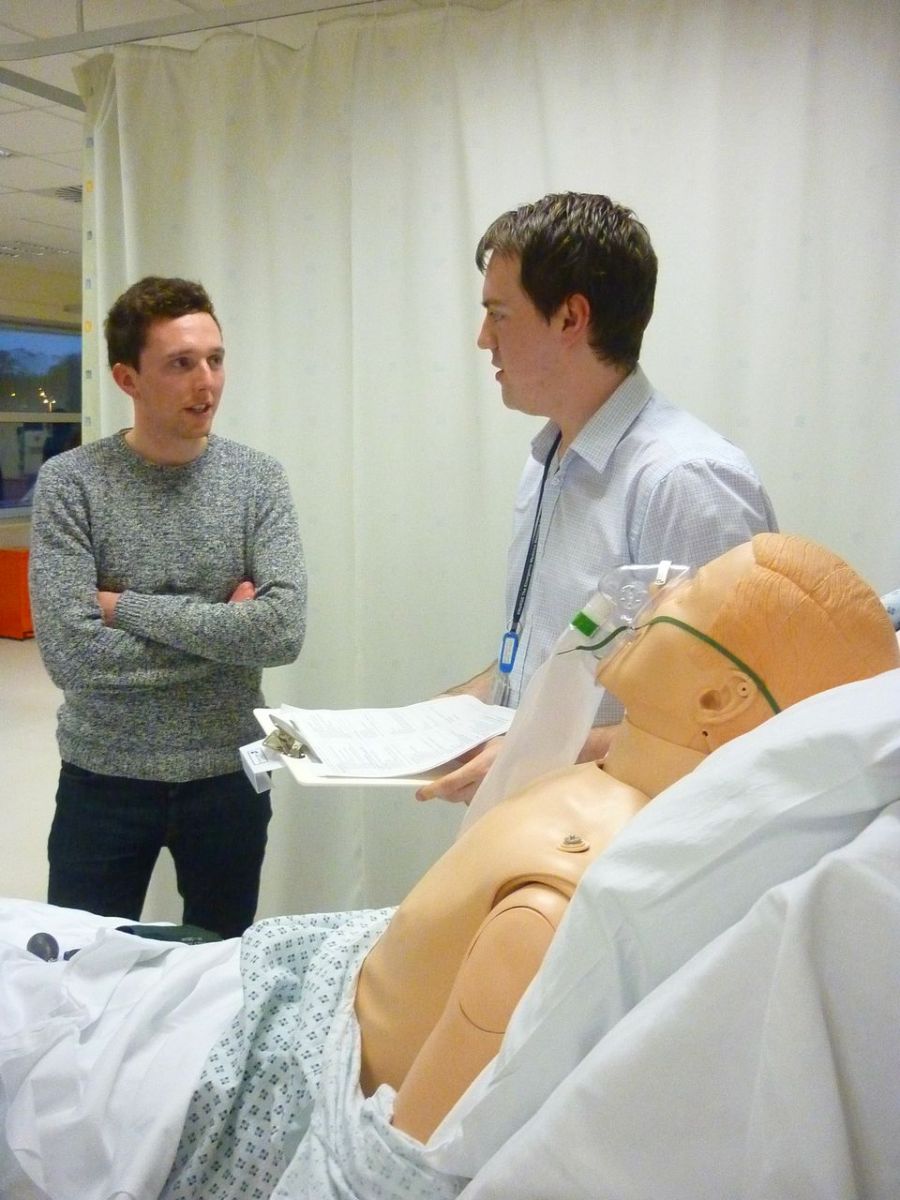
The image above shows a fourth year tutor and third year tutee completing a resus station. (Used with the permission of participants).
Thanks to Dr Ed Mellanby for his advice and the efforts of the fourth year volunteer tutors. We are grateful to our supporters, Wesleyan Medical Sickness, the MPS and the MDU who helped fund the OSCE PAL event and AMEE conference fees.

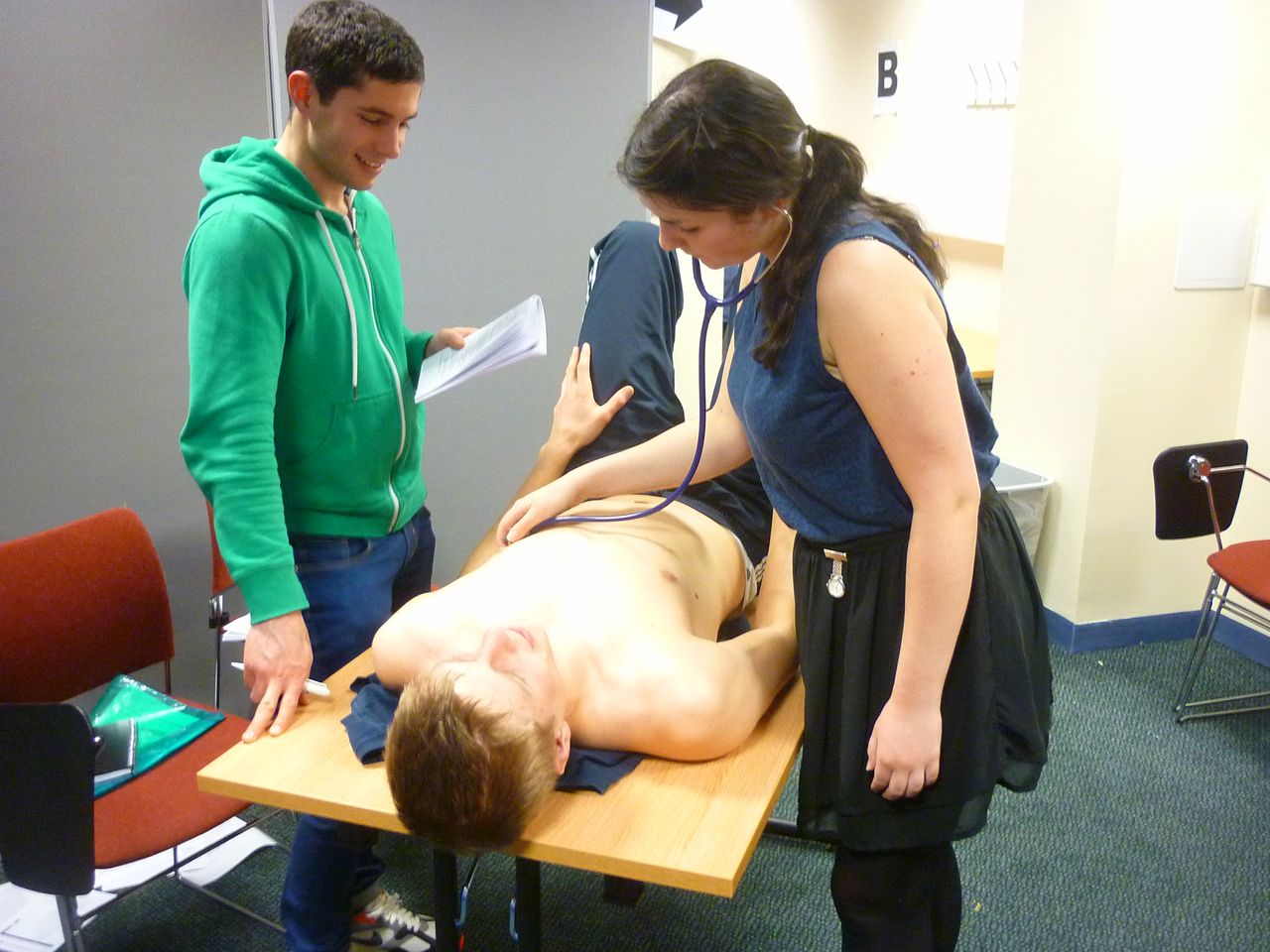
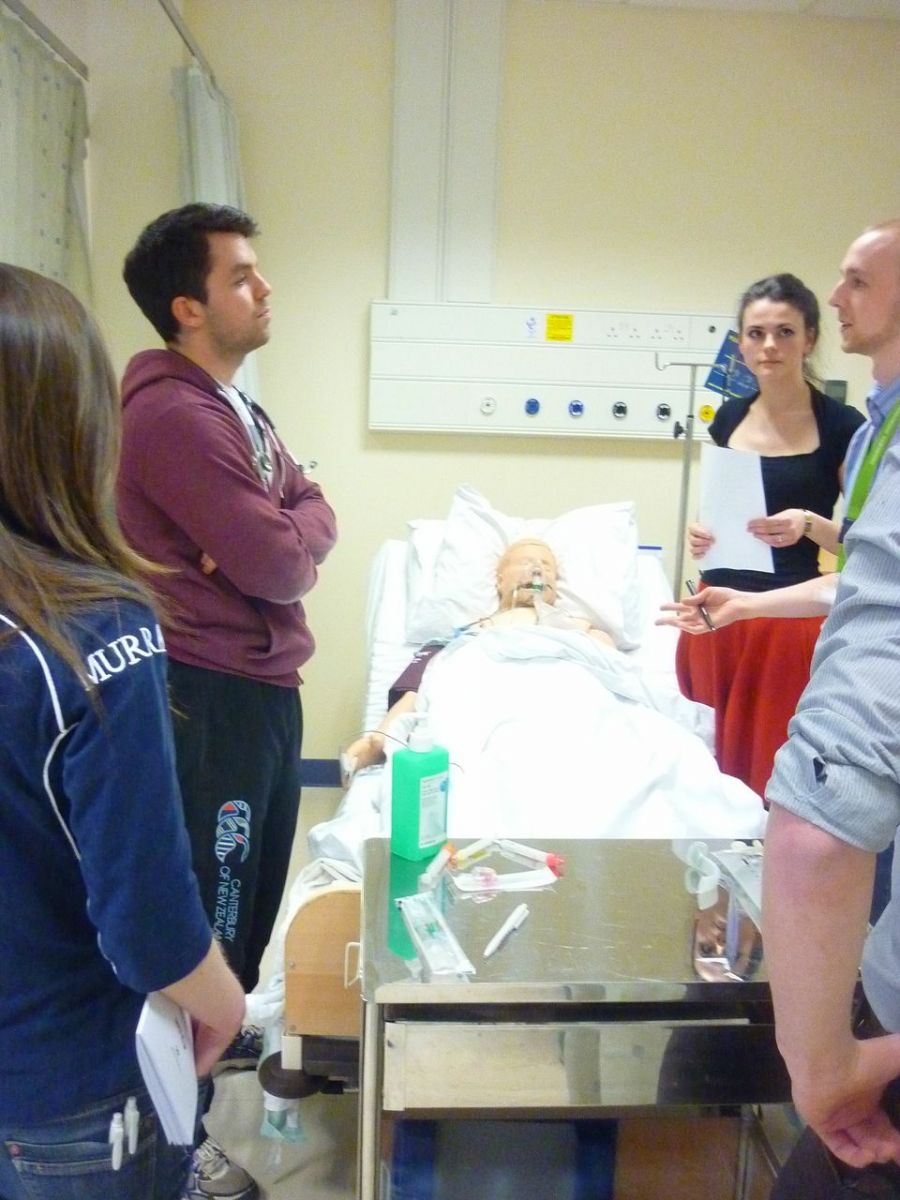
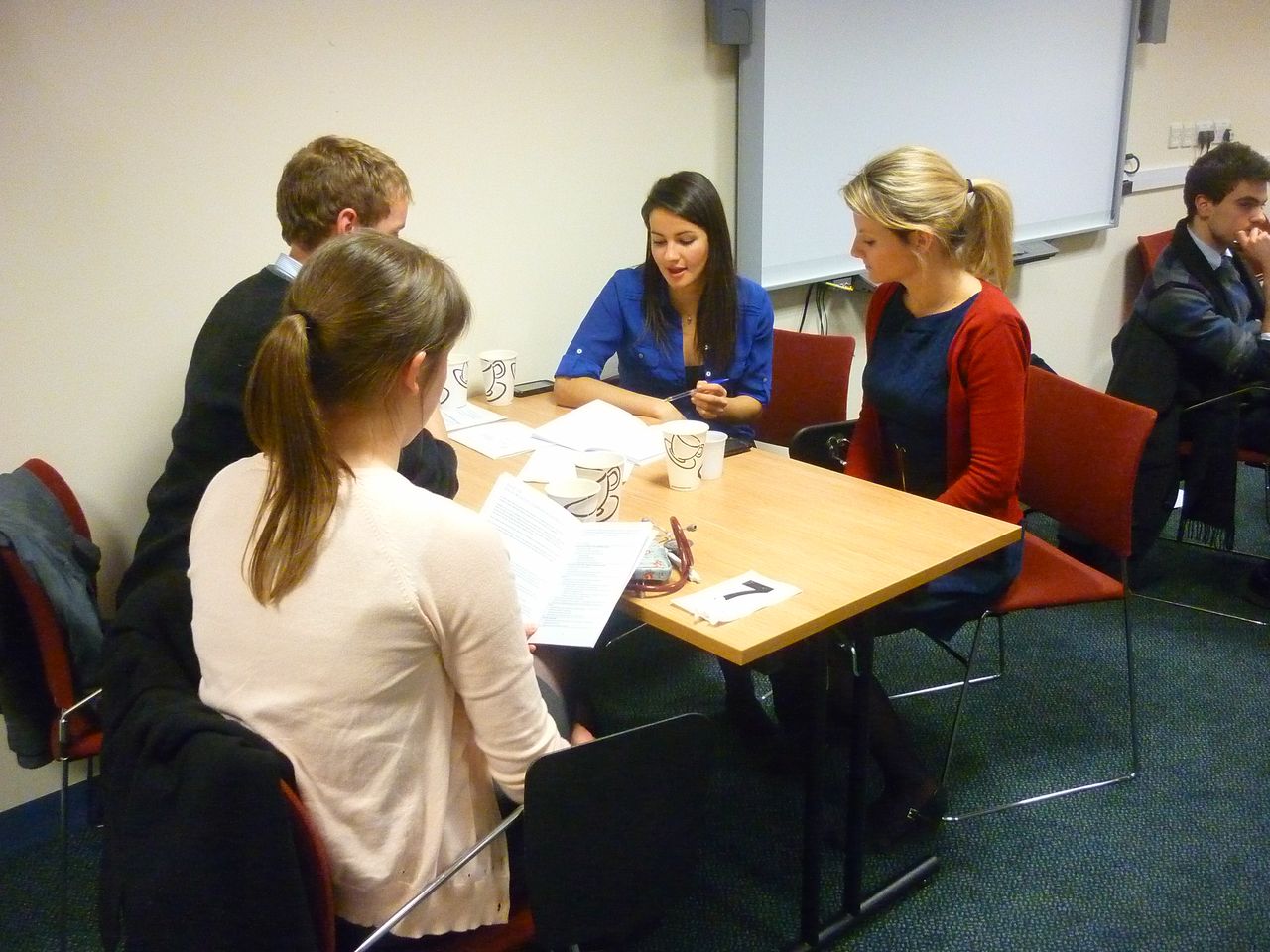
 Send Email
Send Email